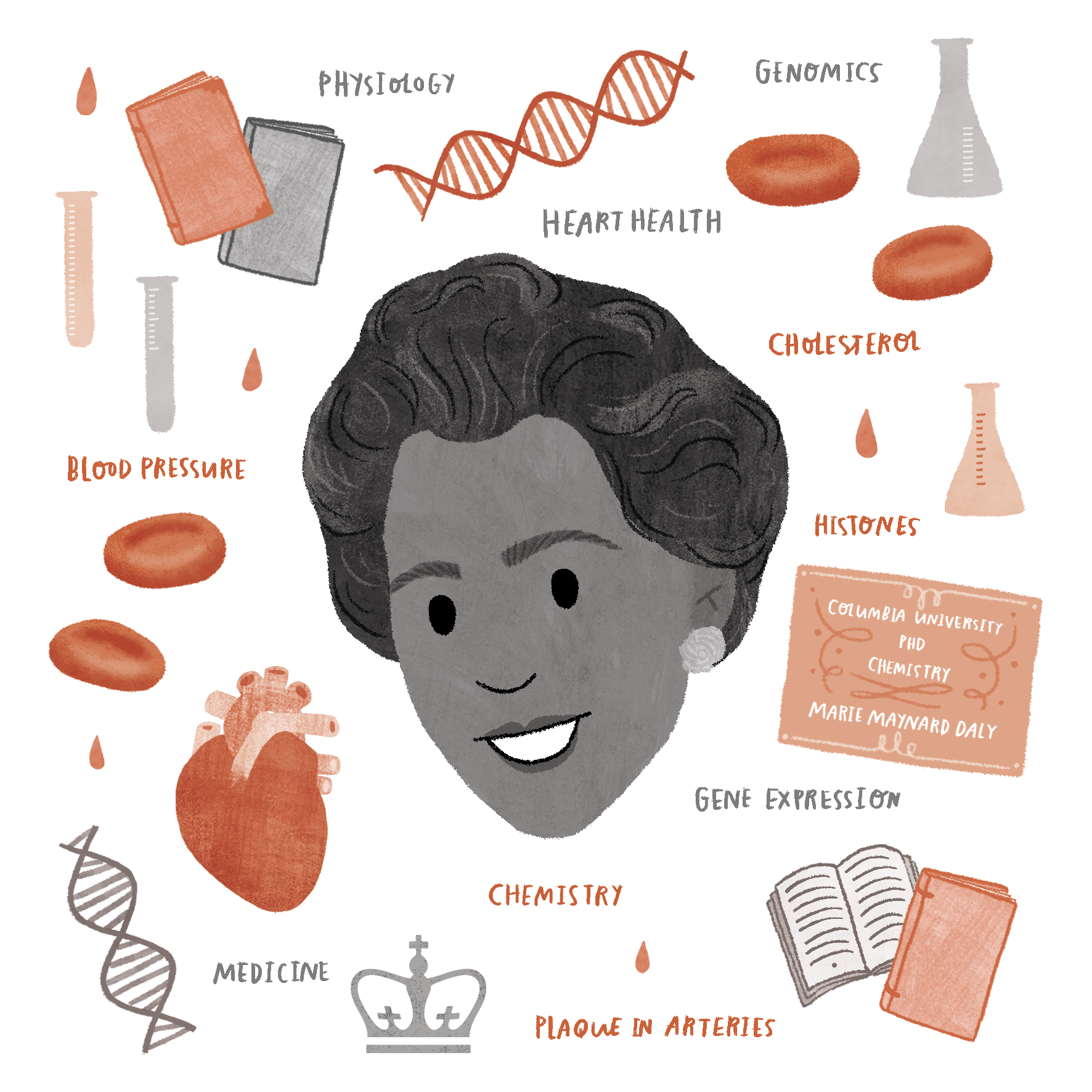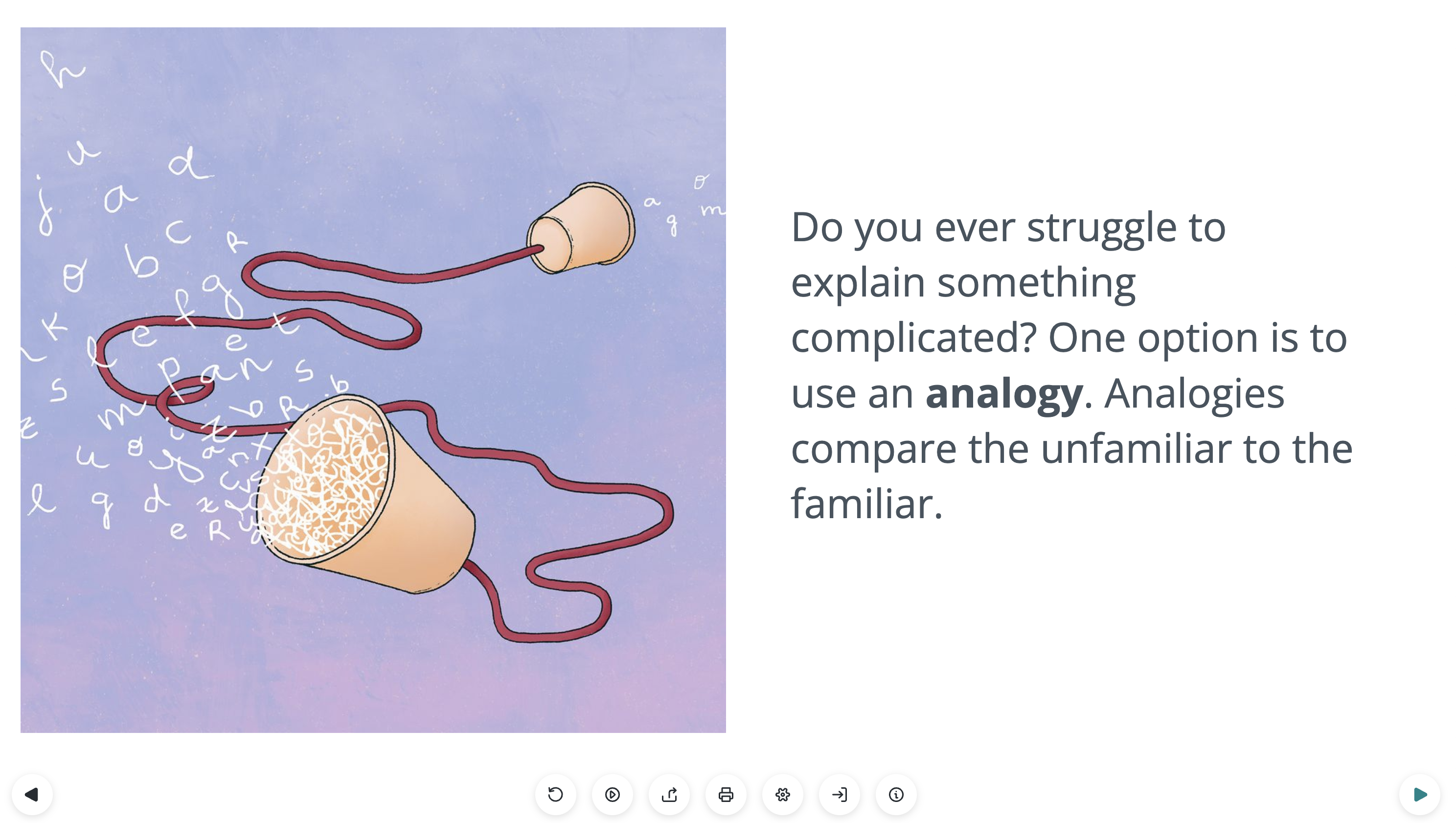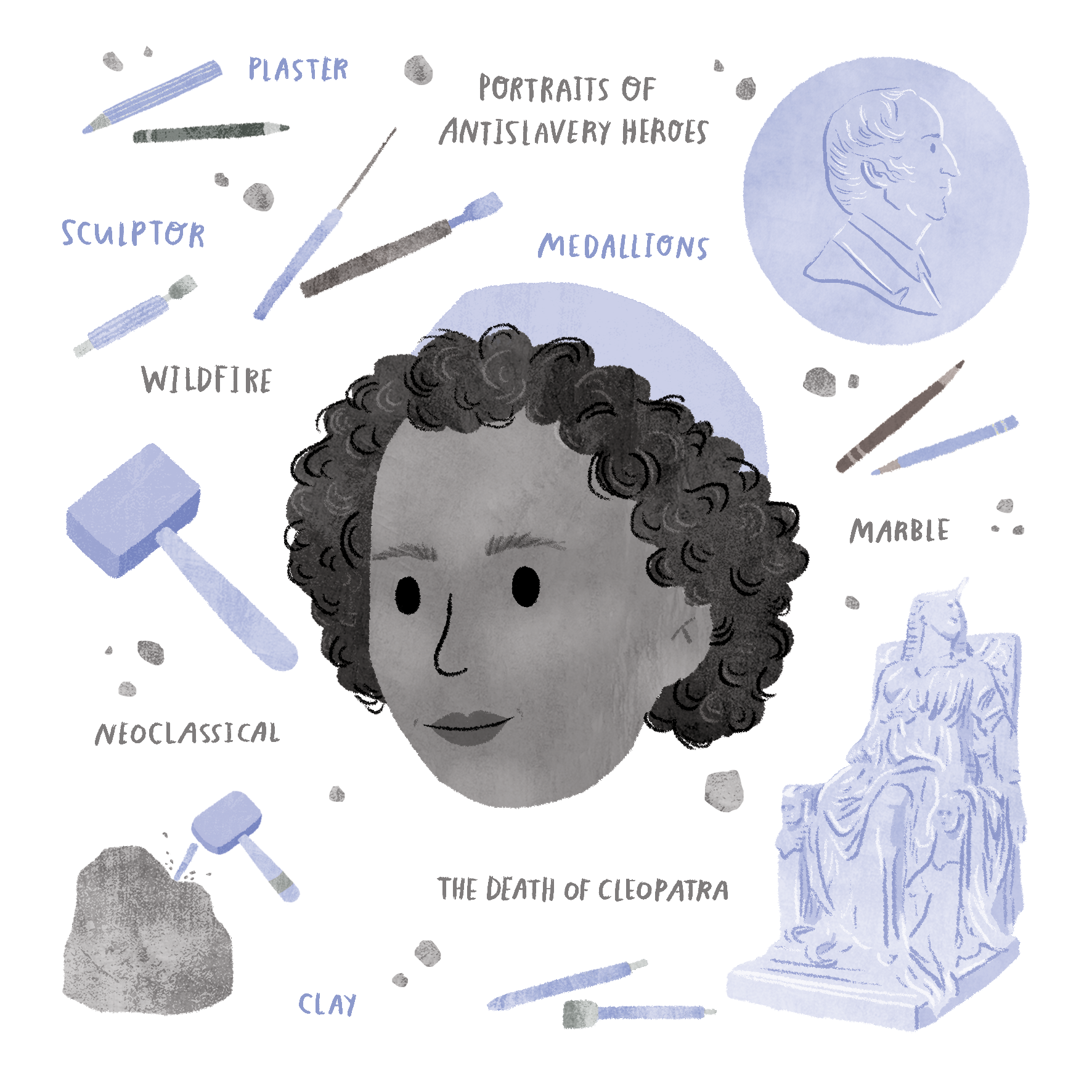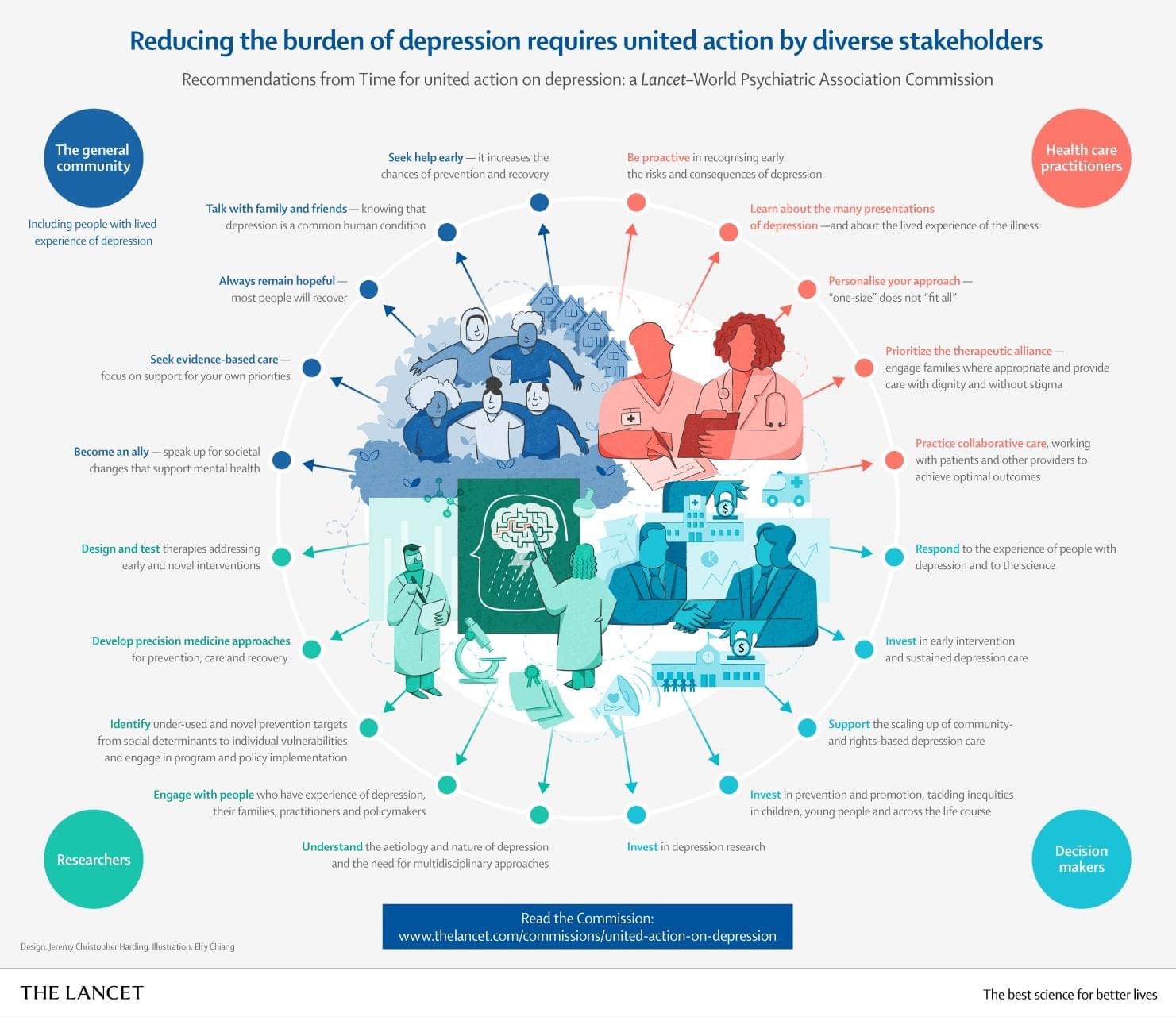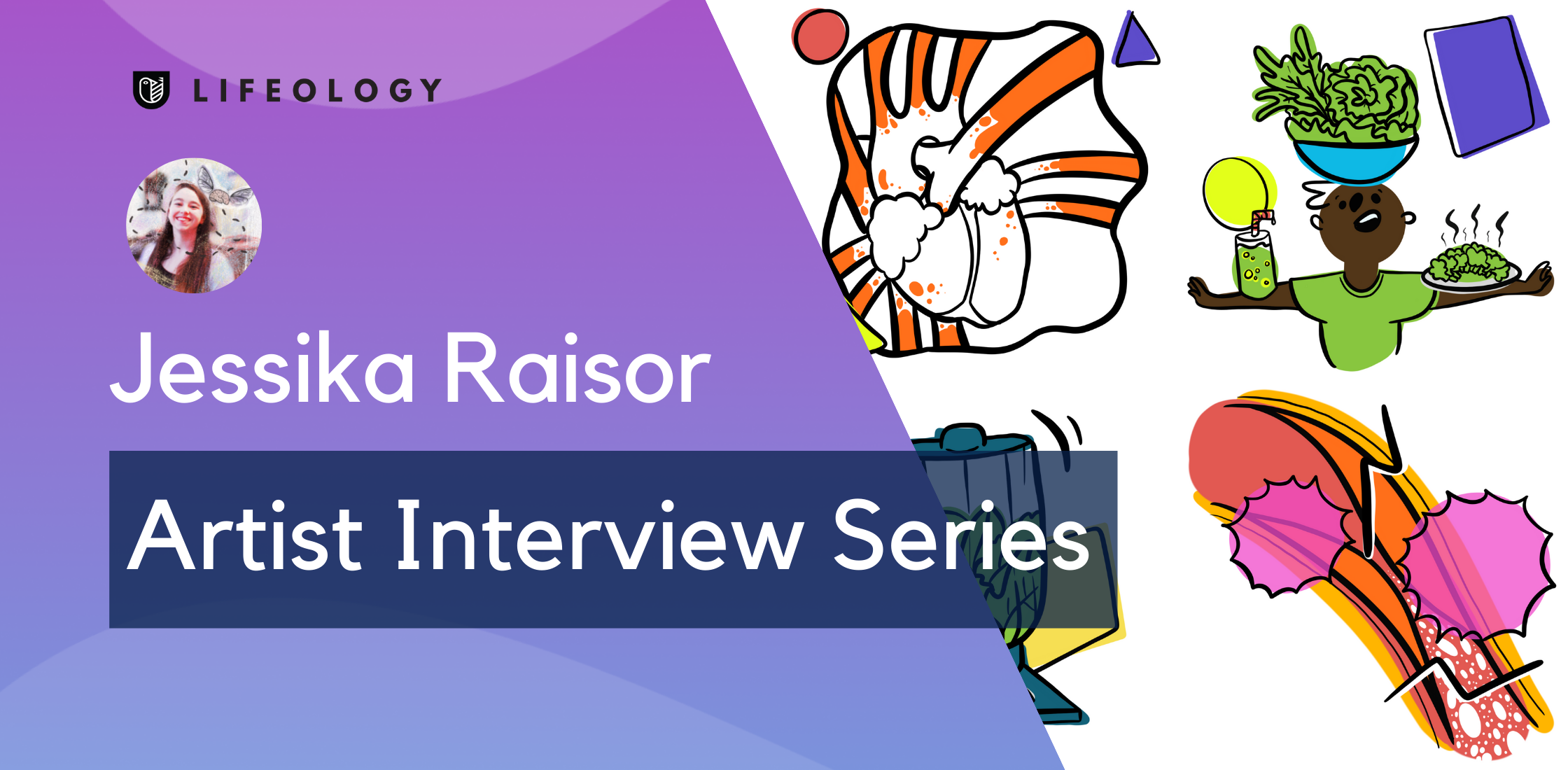
The Lifeology team has been busy working with health professionals, from mindfulness coaches to fitness experts to medical specialists. We have been creating a series of Lifeology courses for LIFE Ascent, a wellness program that gives subscribers the tools needed to improve their health. It is a program based on learning, measuring and establishing habits across multiple areas of health.
Recently, I contacted some of the artists and illustrators that were tasked with creating the visuals for these courses. This blog features the fantastic work of Jessika Raisor.
Can you tell us a little about your background?
I got my BFA in Animation from the Columbus College of Art & Design in 2019. There I began freelancing, working in animation, film, and science communication. I created videos for the channel MinuteEarth and was an intern for the Psyche Inspired Mission through Arizona State University, creating art for the NASA mission to the Psyche asteroid. I also took medical illustration classes during my time at CCAD and freelanced for a short while with various science and educational jobs after graduation. I now work as a multimedia specialist at Galen College of Nursing.
How did you initially find Lifeology?
I saw a tweet at the very start of Lifeology’s search for artists and reached out to Paige with a DM! We had a zoom meeting and the rest was history as I’ve been making courses ever since!
Have you illustrated a Lifeology card deck before?
Yes! A course on mindfulness + nature before the two I did for LIFE Ascent.
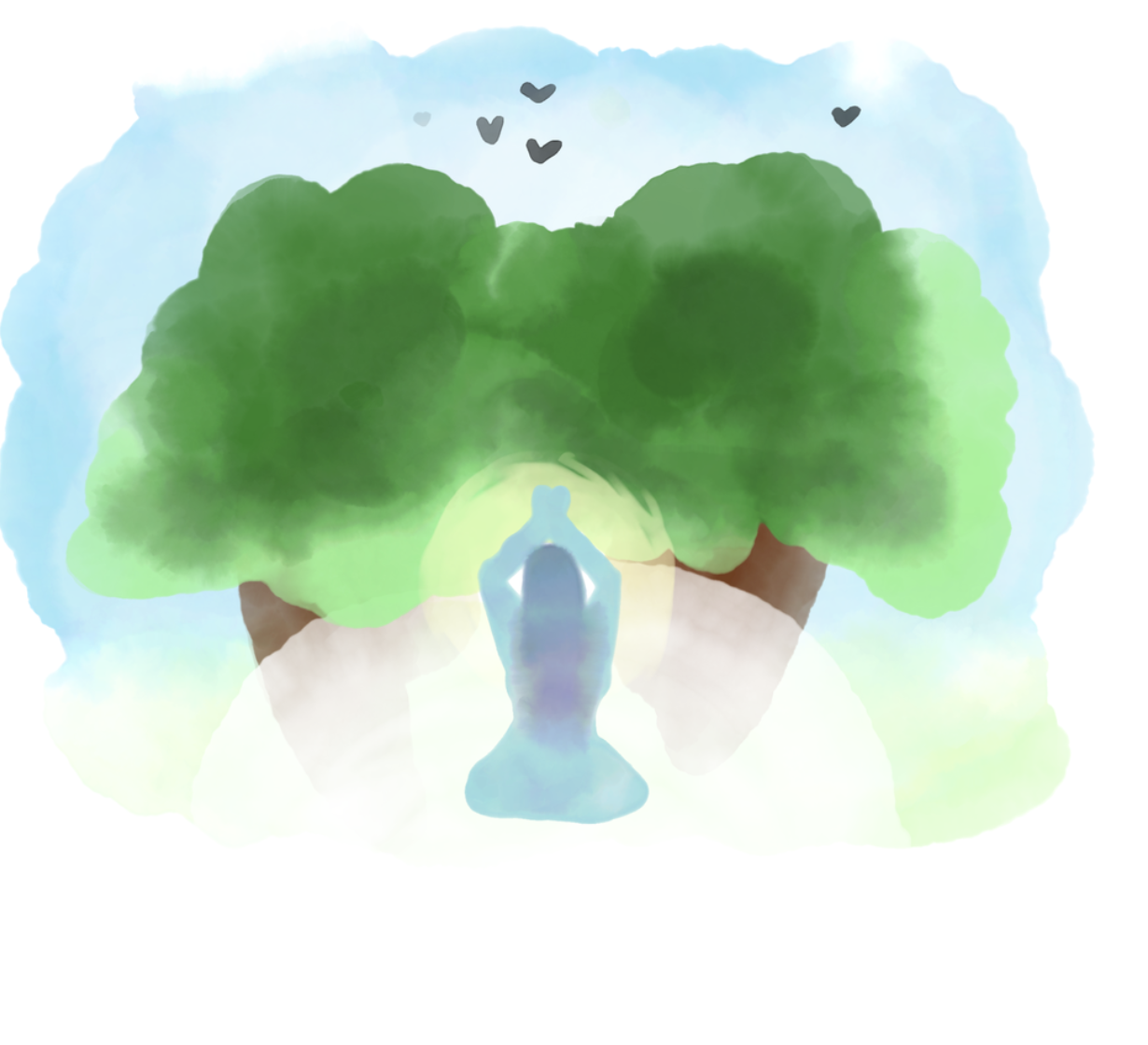
Would you consider yourself a SciArtist?
Yes for sure! Most if not all my work is based around scientific concepts or scientific communication. I’ve created an animated music video for the Psyche Mission. A comparative anatomy card game and website for classrooms. I’ve helped create work for museum exhibits on space and water usage. The list could go on, but those are some of my favorites. More of my past work can be found at www.jessikaraisor.com
The courses you illustrated were on Heart Health and Leafy Greens. When looking at the course scripts, what were your initial impressions?
For the Heart Health course, it was a lot of information that took a lot of time for me to process so I could understand how to convey it in simple illustration and characters. For the Leafy Greens course, it was actually all very familiar because I had just worked on a nutrition course for my full-time job, so I approached it idea forward instead of research forward.
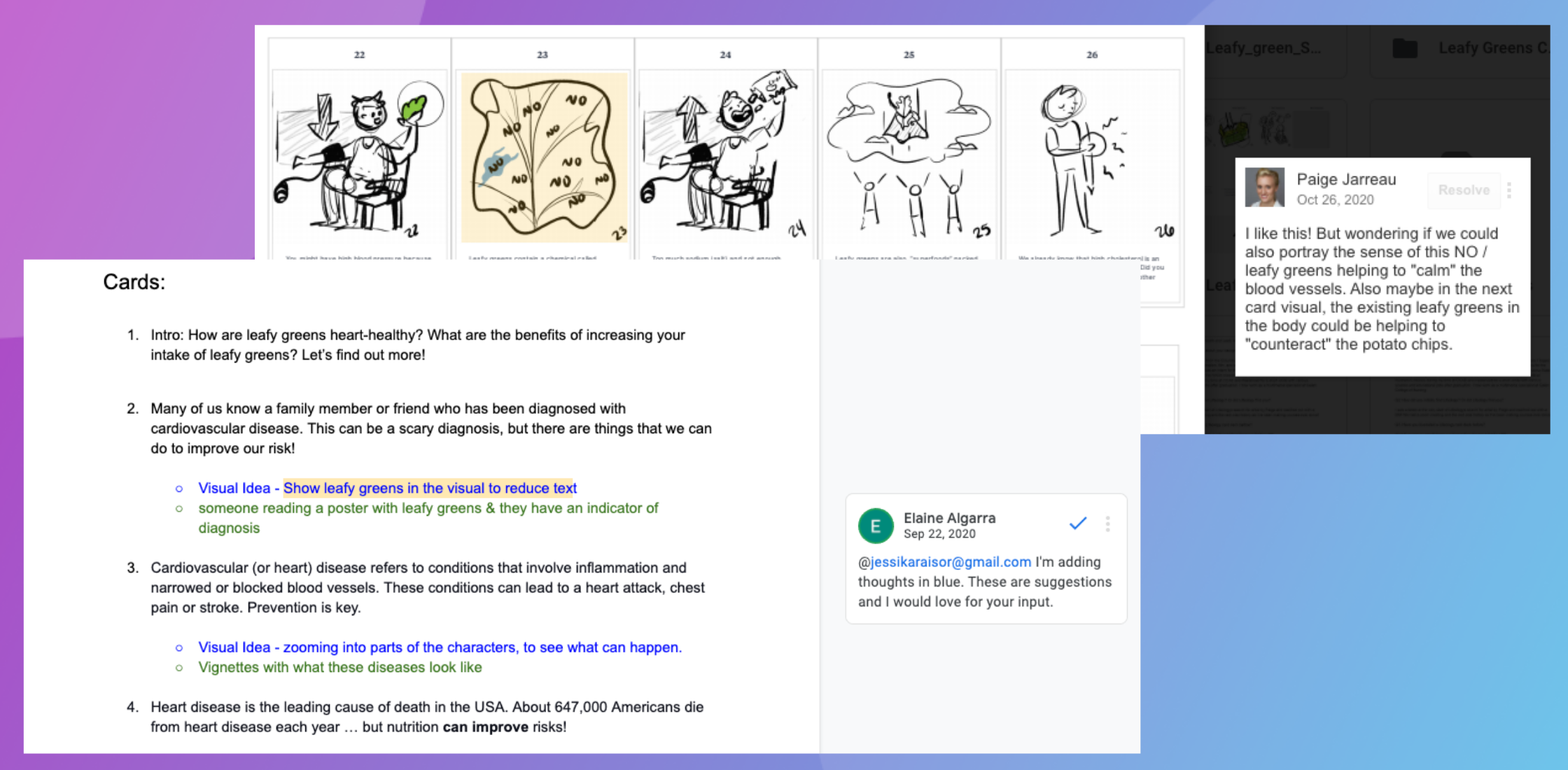
Visual Notes Document for collaboration between illustrator Jessika Raisor and the Lifeology Team.
Are visual notes a useful starting point? Did you make any decisions to develop ideas further?
Yes! I don’t like working in a bubble as the only source of ideas and love when the author or scientist throw in what they were thinking. Even if it’s not an idea I go with, how they visualize it is a great stepping off point for how I think about the scientific concepts.
Do you use storyboarding in other work?
As an animator, storyboarding is second nature (after years of studying it of course) to approaching any project.


Storyboard drawings are rough thumbnail sketches that give a quick visual idea and overall flow of the course. Storyboard images are then reviewed, modified and refined.
Can you tell us a little more about how you get from visual idea to storyboard image to final rendered piece?
I first provide visual notes for all the cards and work out the progression of the story in text form first. Here I decide on any ideas I may want to turn into physical characters. In the Blood Biomarker course, that ended up being the biomarkers themselves. This is great for simplifying stuff and making it more recognizable, HDL and CRP for example aren’t uniquely shaped like something else in the body-say an antibody. So designing them as abstract characters creates more effective storytelling.
Next, I create a visual style and language that works for the subject matter. Different types of courses are drawn in different manners.
After this, it’s hard to put my process into words. I’ve been drawing for years and learn better ways to tell stories visually every day. So I put Apple Pencil to iPad and sketch out compositions until I feel that it works. Once I have it all sketched out I send it back to the team for critique. Then I’ll take their comments into consideration and make some changes and once everything is approved I create the final line!
What are your illustration tools of choice and why? Any recommendations to those starting out?
I use an iPad Pro and Apple Pencil and Procreate. I started using these tools a couple of years ago and found them to be the easiest and most enjoyable to use.
For those starting out in digital art, what I used for years was a Wacom tablet and Painttool Sai!
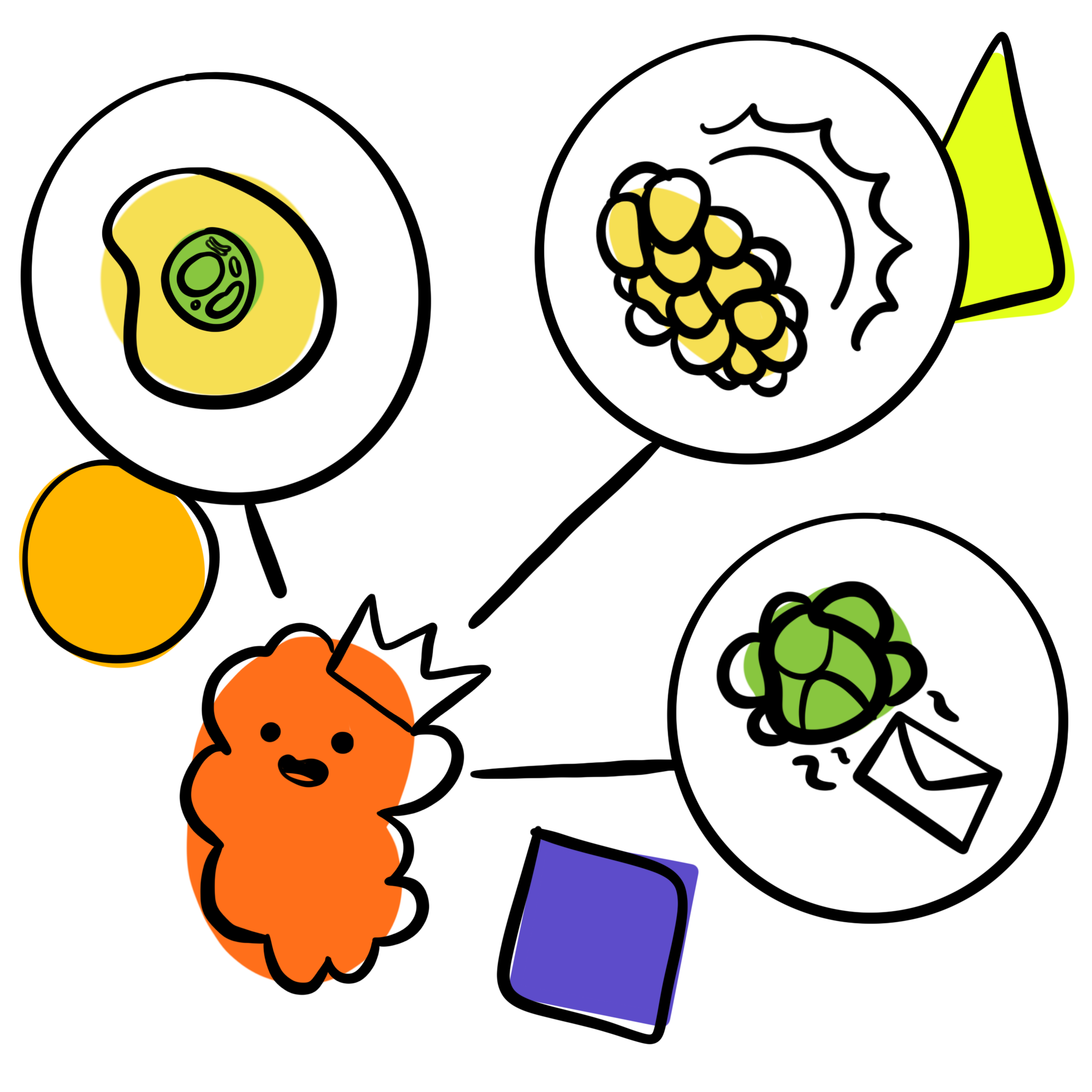
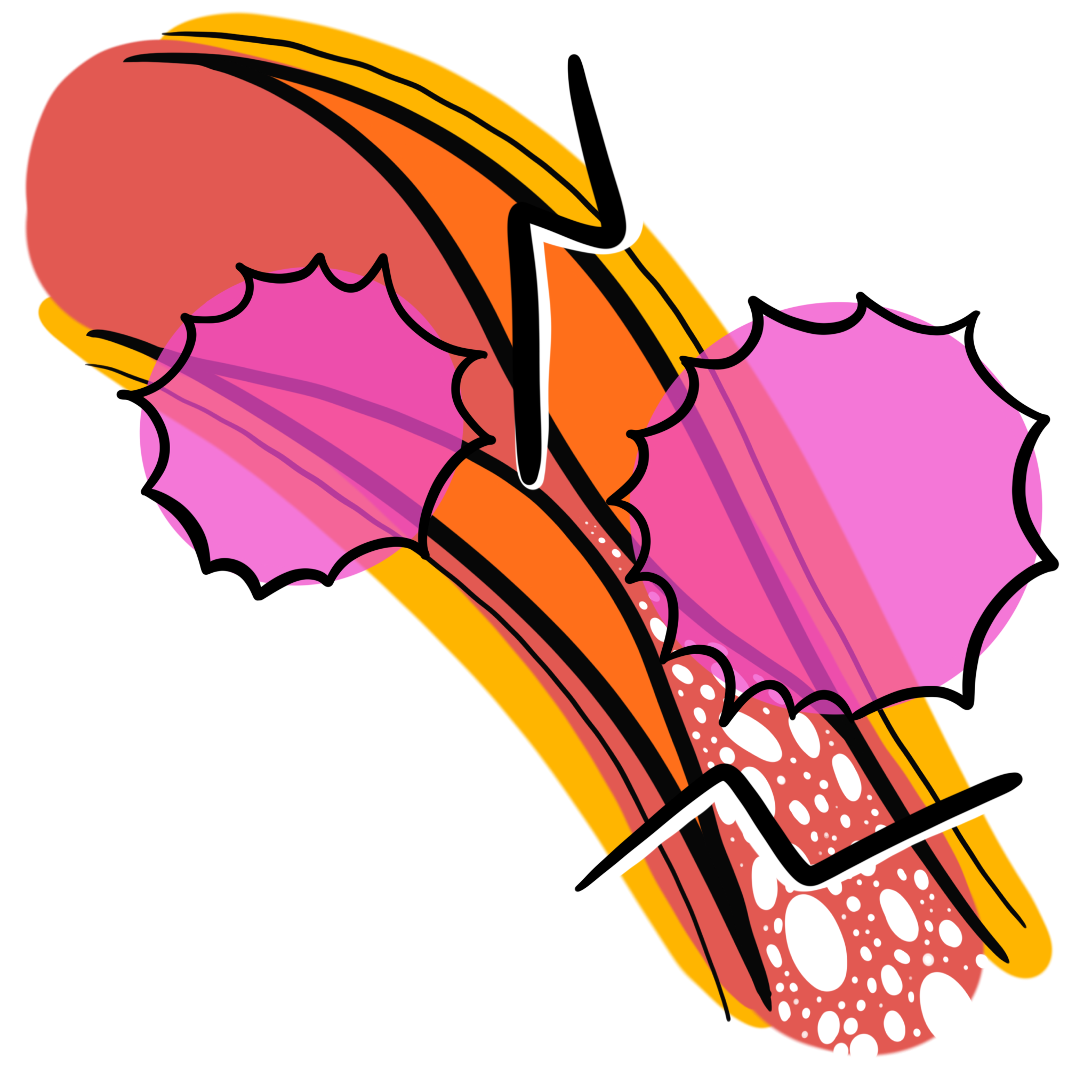
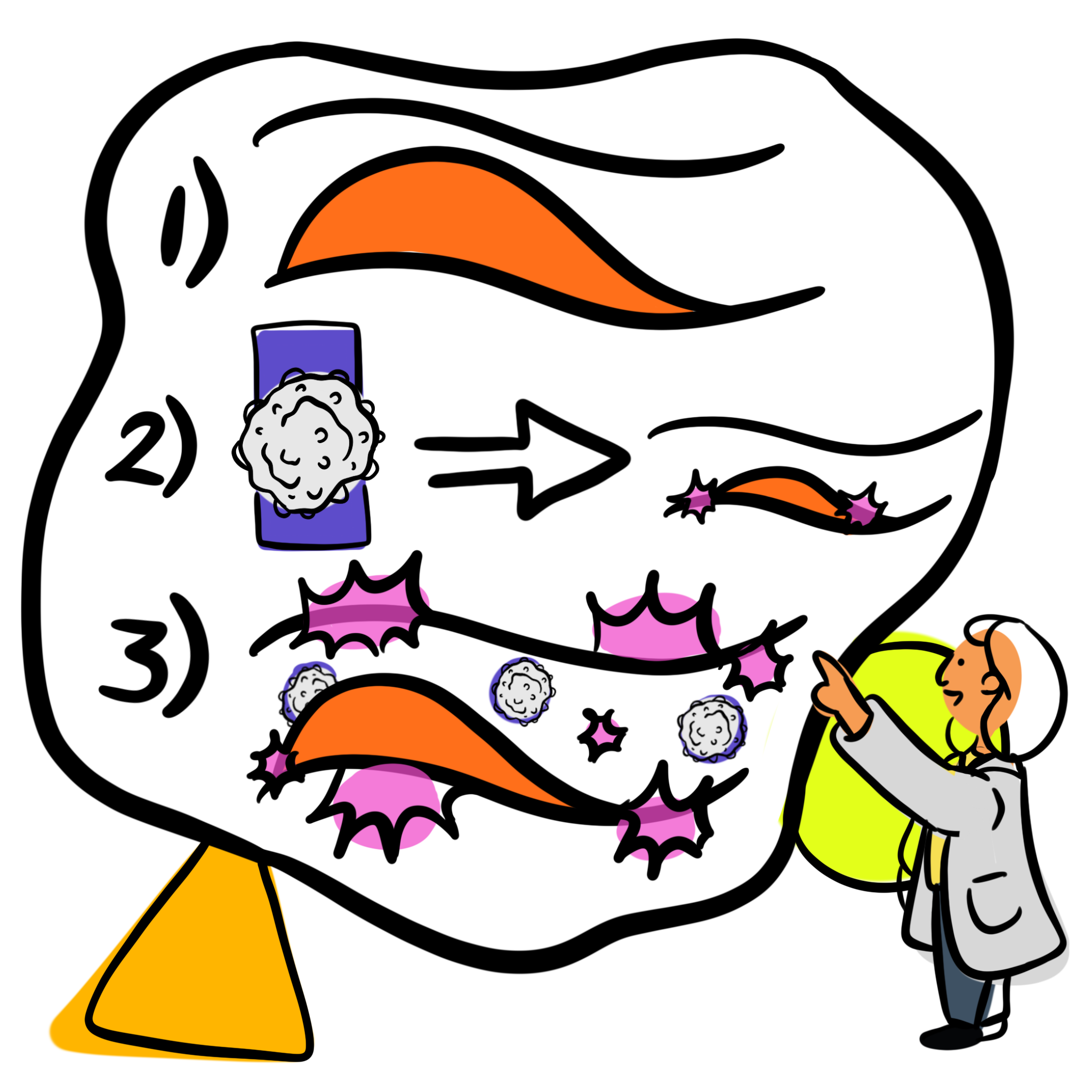
Three Images from the Heart Health Biomarkers LIFE Ascent Course.



Three Images from the Leafy Greens LIFE Ascent Course.
Tell us a little more about your other types of Art. Do you sell art?
This is about all I do! I love art and animation in the science field but as it is my job I don’t create much art/drawings outside of it, but that’s ok! I did recently start a podcast on epic poetry, called Of Epic Proportions (@ofepicproportions_podcast on Instagram) where I’ll be reading epic poetry, my favorite form of literature! This is just a random personal project that I am excited to have going on in the background of my life! So I do try to stay creative outside of work but instead explore different mediums of art. I am recording a backlog of episodes now and hope to start releasing them in February!
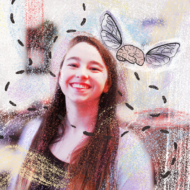
Jessika is an educational animator currently located in Columbus, OH. She creates work to make scientific subjects and concepts understandable and fun for kids. Her favorite topics are insects, medical, and space! When she is not drawing, she is often found teaching art to the next generation!
Instagram account: @jessikaarts
Twitter account: @jessika_arts
